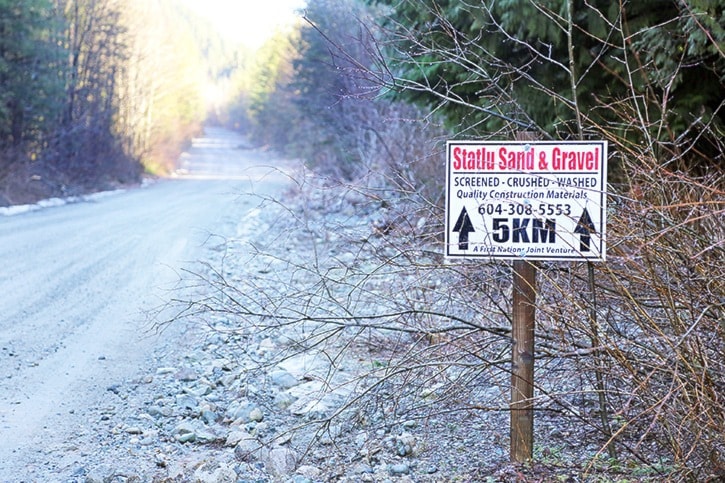A final decision about whether or not the proposed contaminated soil dump on Chehalis Forest Service Road will be permitted is one step closer to being made this week.
At a meeting on Wednesday, the Fraser Valley Regional District (FVRD) Electoral Area Services Committee (AESC) voted unanimously in favour of the staff recommendation that the FVRD refuse the application for a zoning amendment that has raised many local eyebrows.
That company proposed to extract gravel from a site 10 kilometres up the Chehalis Forest Service Road and back-fill it with remediated soil sourced from contaminated sites like gas stations, car repair shops and dry cleaners.
About 40 people were in attendance to hear nine delegations speak to the application—one for and eight against—before the committee’s discussion and decision.
The AESC’s decision will next be in front of the FVRD board for final ratification at its upcoming meeting on Feb. 23.
Previously at a public meeting in mid-December, most of the approximately 80 people in attendance voiced opposition to the proposal, which would be located about half-a-kilometre from the Chehalis River.
In a memorandum presented to the committee at Wednesday’s meeting, FVRD electoral area planning and development staff state they are not in support of the application.
“The Chehalis River Valley is viewed as a wilderness area that supports resource extraction, tourism, recreation and ecological functions,” the report says. “A new contaminated soil landfill is not consistent with this view.”
The would-be major facility is “intended to primarily serve the needs of the lower mainland,” it says, adding that both staff at the Ministry of Environment and the Ministry of Forest Lands and Natural Resource Operations couldn’t confirm the region’s needs for a contaminated soil dump, nor its own generation of such material.
Instead, as the recommendation states, refusing the application and then determining the need for a facility of this type would be staff’s preferred next step.
But developing a study for this potential new priority is beyond the scope of the FVRD budget, according to the report.
So the proposal also includes that the board request funding for a regional contaminated soil disposal plan from the province.
The FVRD would carry out the B.C. funded study plan with representatives from the industry, the provincial government, the public and First Nations if the funding were approved.
Much of the background listed in the FVRD staff memorandum discussed the public’s response to the proposed project: an “overwhelming majority” of the 50 letters received to date were opposed to the public, with more continually received; an online petition through change.org had about 2,000 signatures; a written petition with 160 signatures was attached to the memorandum; and Sts’ailes First Nation oppose the location and Scowlitz First Nation are against the proposal.
Statlu’s proposal calls for between 350 to 1,000 tonnes of soil to be dumped at the site each work day.
In a technical assessment commissioned by the company and delivered prior to December’s meeting, a consulting firm reported that the soil could contain “residual petroleum hydrocarbons, chlorinated hydrocarbons, and heavy metals.”
Statlu president Earl Wilder said the material is “not a hazardous waste,” and is presently dumped elsewhere in the Lower Mainland with less care than his plan envisions.
Statlu’s technical assessment envisions a double-bottom lined fill site, with a wastewater purification system to treat effluent.
Wilder said the chances of a spill were one-in-four-hundred million, more ten times less likely than a lottery win.
He said the project would create jobs and other economic benefits for the region.
Wilder said in January that a lack of knowledge was causing misinformation about his company’s plans and that it is the best site in the Lower Mainland yet to be discovered for such a facility.
He and other Statlu representatives were one of the delegations that was heard at Wednesday’s AESC meeting.
